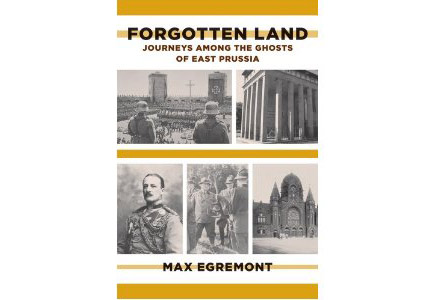Review: Forgotten Land by Max Egremont

Like most forms of art, photography frustrates its practitioners because of its limitations. If only… But just look at what movies have turned into since computer technology enabled their makers to overcome limitations: Out went the imagination, and this means not just the makers’ but also ours. What there left to imagine, when a computer rendering can show it all? Limitations engender imagination. Photography is not exempt from this rule, even though it is by far the geekiest of all art forms (what other form of art would have so many of its practitioners obsess over completely irrelevant technicalities?). Without its many limitations photography would be a soulless endeavour. Actually, it’s even better than that: What makes photography truly unique is that it looks like it just does it all, shows it all, when in fact it doesn’t. That is where you can find or make your stories, when you’re a photographer, right there. (more)
Writing, on the other hand, works in different ways. Writing very obviously relies on the human imagination, for all kinds of reasons, and it has very different limitations. I’m convinced that writing provides the best tool outside of her/his own medium a photographer could ask for: The overlap between what writers and photographers try to achieve is immense, even if the forms are very different. Sadly, most photographers do not understand writing very well. As a matter of fact, many photographers refuse to write (using the Homer Simpson style excuse that had they wanted to write they would have become writers), and many photographers also don’t read very much. But you can tell if there is a photographer who doesn’t read, because it shows in her/his craft.
I had to think of all of this when reading Max Egremont’s Forgotten Land: Journeys Among the Ghosts of East Prussia. The book is about a place - East Prussia, and “place” is something photographers are familiar with. How do you portray a place? If you think about a place whose view is to be trusted, the local’s or the visitor’s? These are simple, these are terrible questions, because there are no easy answers. But Egremont’s approach offers some surprising insights in how one could try to find an answer. It’s a simple approach, albeit one that not everybody will understand easily1.
What we have here, or maybe had here, is East Prussia, which does not exist any longer. Previously part of the German state of Prussia, the area is now part of either Poland or Russia (with a sliver belonging to Lithuania). As it turns out East Prussia’s history was never really all that obvious. Conquered by the Teutonic Knights (I kid you not), the area used to have considerable amounts of non-German minorities. At various stages it belonged or at least listened to (briefly) Russia or Poland, even before the Germans were expelled after the end of World War 2. In other words, it’s a real place, with a real history, meaning without easy, simple answers.
Egremont chronicles East Prussia not through its history (there is a lot of history in the book, but it’s not written like a history book) or through what you can find on the land (there is a lot of that in the book, too, but again, it’s not written like a guidebook to what used to be East Prussia). The author approaches East Prussia through the people who were affected by it: East Prussians (of course) and people who had something to do with the land, for whatever reason (and that reason can be seemingly flimsy). A place, after all, is “made” by people.
There is, for example, Käthe Kollwitz, the artist, who came from Königsberg, but who lived in Berlin for many years. Egremont describes her attempts to create a memorial for her son, who was killed during World War I. The memorial, a most moving piece of sculpture, was installed at a cemetery in Belgium, and most of this has very little - if anything - to do with East Prussia. But then again, it has everything to do with East Prussia, because the connections are right there, under the surface, and that is where things get interesting.
Or take Marion Gräfin Dönhoff, originating from one of East Prussia’s (in)famous Junker families, who went on to become one of West Gemany’s most highly respected journalists. Egremont chronicles her family roots as well as talks about Dönhoff herself, torn between East Prussia and West Germany, whose ideals could not be more different. There is an account of Dönhoff transporting a statue of Kant, the philosopher, to what is now Russia, but previously used to be part of the Soviet Union, the enclave of Kaliningrad (formerly Königsberg), driving over a thousand miles in a rickety old car. Kant, after all, hailed from Königsberg, literally from just Königsberg, he never set foot outside of the town. It’s a marvelous story that with all its weird and moving details says much more about the land, its past and present, than a simple recounting of historical details could.
This is where photographers might be able to learn a thing or two. Forgotten Land never really just describes. Instead it often seemingly meanders. It’s most photographic in that sense: While being descriptive, it accept and works with the limitations it can’t avoid - how to possibly evoke a place. Whatever that place, East Prussia, might have been, whatever the land is now - Forgotten Land is a wonderful mediation on what was and what still is, and on how what was and what still is was made - by people, one flawed individual at a time.
1 A “neat” example is provided by Richard Eder’s sorry attempt to review the book in the New York Times. R.J.W. Evans’ In the Lost World of East Prussia, published in The New York Review of Books is vastly better. Evans’ review made me buy the book.